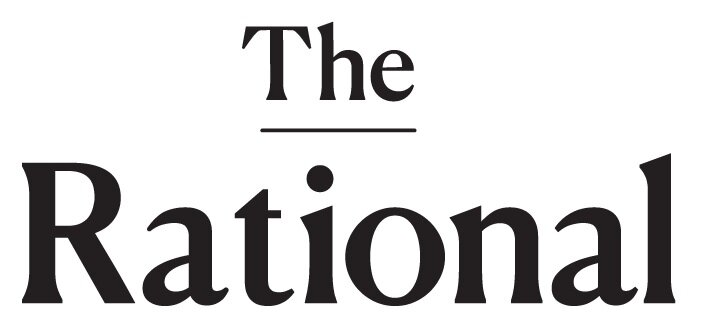Brownface and Racial Inequality in Singapore
Because it's not just an America problem.
There has been a lot of debate and discourse in Singapore about the brownface ad put out by E-Pay, a Singaporean electronic payment website. The ad featured Mediacorp actor, Dennis Chew, portraying a Malay Aunty donning a hijab, a Chinese woman in a pink jacket, a Chinese man in blue coveralls, and an Indian man with his skin painted with brown make-up to emphasize his ethnicity. What is vile about this situation is that this is not the first time such an incident has taken place. Instead of hiring minority actors to portray these characters, the advertisement reduced these minority characters to their skin color and cultural stereotypes through something as offensive and socially inappropriate as brownface.
Perhaps the advertisement was a mistake. Perhaps it was not, but the fact remains that while Singapore prides itself as a multiracial country, we still seem unable to distinguish the difference between diversity and inclusion. Singapore is diverse. So many different ethnicities represent our country but when we examine closely those in power—in parliament, at universities, in governments—or in the decision-making room at Mediacorp and Havas Worldwide, it becomes glaringly obvious that these pan-ethnic Singaporean ethnicities are not included in a lot of political or creative processes that may directly affect them.
Would you not be angry, too, if, after expressing that the portrayal of brownface in an ad is offensive to your ethnicity, the majority in your country tells you to pipe down? That the Indians should “learn to take a joke.” The disappointment and hurt that was felt across Singapore by the Indian community as we saw the conversation around the ad take place, would be hard to hide.
The Singaporean pledge tells us to set aside our differences, racially or otherwise, to build a democratic society based on justice and equality. So for the Home Affairs Minister, Mr. K. Shanmugam, to release a statement saying, "Racism exists in Singapore, but the situation has improved over the years and is much better now than before" and that, “Sizeable portions of the public prefer that such concerns...be discussed (behind) closed doors and not brought out to the public" makes we wonder where that Singaporean pride in justice or equality is, in the public discrimination of minorities and private discretion in standing against the majority. It seems obvious to me that, in regard to this incident and response, Singapore has failed to uphold the pledge to stand united.
The way that this entire scandal was handled has made me realize that in the eyes of the Singaporean society, racism is debatable. But here's the thing: when someone tells you that something offends them, you don't get to decide that it isn't. You don’t get to debate their real feelings or overlook their experiences. So why should the non-Indian majority of Singapore be allowed to overlook mine? Ours? The ad was culturally insensitive and racist to the Indian minorities in Singapore. The fact of the matter is that these unacceptable blunders and empty apologies will not be able to make up for the failure of E-pay and Mediacorp to consult an Indian or Malay person during any part during the decision-making process. The convenience and ease with which one can offer an apology in 2019 has diluted the sincerity of an apology. To offer one without any reparations is to offer no apology at all, and the Indian community is under no obligation to accept an apology simply because it was extended.
To reduce my ethnicity and its beautifully complex culture to something as crude and carelessly put together as the painted “character” in the E-Pay ad perpetuates harmful racial stereotypes. Indian culture is the most diverse in the world, yet we are constantly misrepresented and caricaturist in mainstream media as dark and therefore less-than bodies. The Indian community is made up of a tapestry of different skin tones, and yet, it consistently seems as if society only identifies us as inconsequential and as an annoying static noise when all we ask is to be seen and heard.
The first time I experienced racism first-hand, I was around six years old. My teacher switched off the lights and turned on the projector to watch something when someone said, “We can’t see Hafizah.” That was the moment when I realized that my skin color could and would be used as a punchline to many racist jokes at the expense of my ethnicity. Now older, people continue to make snide comments—“Don’t stand in the sun too long or you will become black like her”; “Why don’t you use skin whitening cream?”; “ Are you African American mixed?”; “I would date you if you were fairer.” I have been called the K-word and the N-word. I had been told that brown people are “smelly”; that our food stinks. I wonder why the same people who say their favorite color is black or that mauve “is such a pretty color” hate it on our skin. For every Jet black iPhone that has been sold out, there is an Indian person who got mocked for being the same color.
It was said by Oscar Isaac that ”those who find ugly meanings in beautiful things are corrupt without being charming. This is a fault. Those who find beautiful meanings in beautiful things are cultivated. For these there is hope.” To see the Indian culture, ethnicity, and community in technicolor is to find beautiful meanings behind the hard work and accomplishments of the Indians in Singapore. To be Indian is to be talented like singer-songwriter Suthasini or Shabir; to dance like the legendary dance master, Mr. Manimaran Thorasamy; to be funny like comedian and entertainer, Kumar; to be a leader like our late president, Mr. S. R. Nathan; to be smart and tenacious like the prominent criminal lawyer, Mr. Subhas Anandan or local retail giant, Mustaq Ahmad.
But above all, to be Indian in Singapore is to be first, Singaporean. To be, as our national pledge states, “... one united people, regardless of race, language or religion, [who] build a democratic society based on justice and equality so as to achieve happiness, prosperity and progress for our nation."
I remain hopeful that there will come a day in Singapore when the inequalities and racism faced by minorities will be addressed and that I will be here for that day. It will be hard, but I have no doubt that we will get there. It will be beautiful, and I, so proud.
















